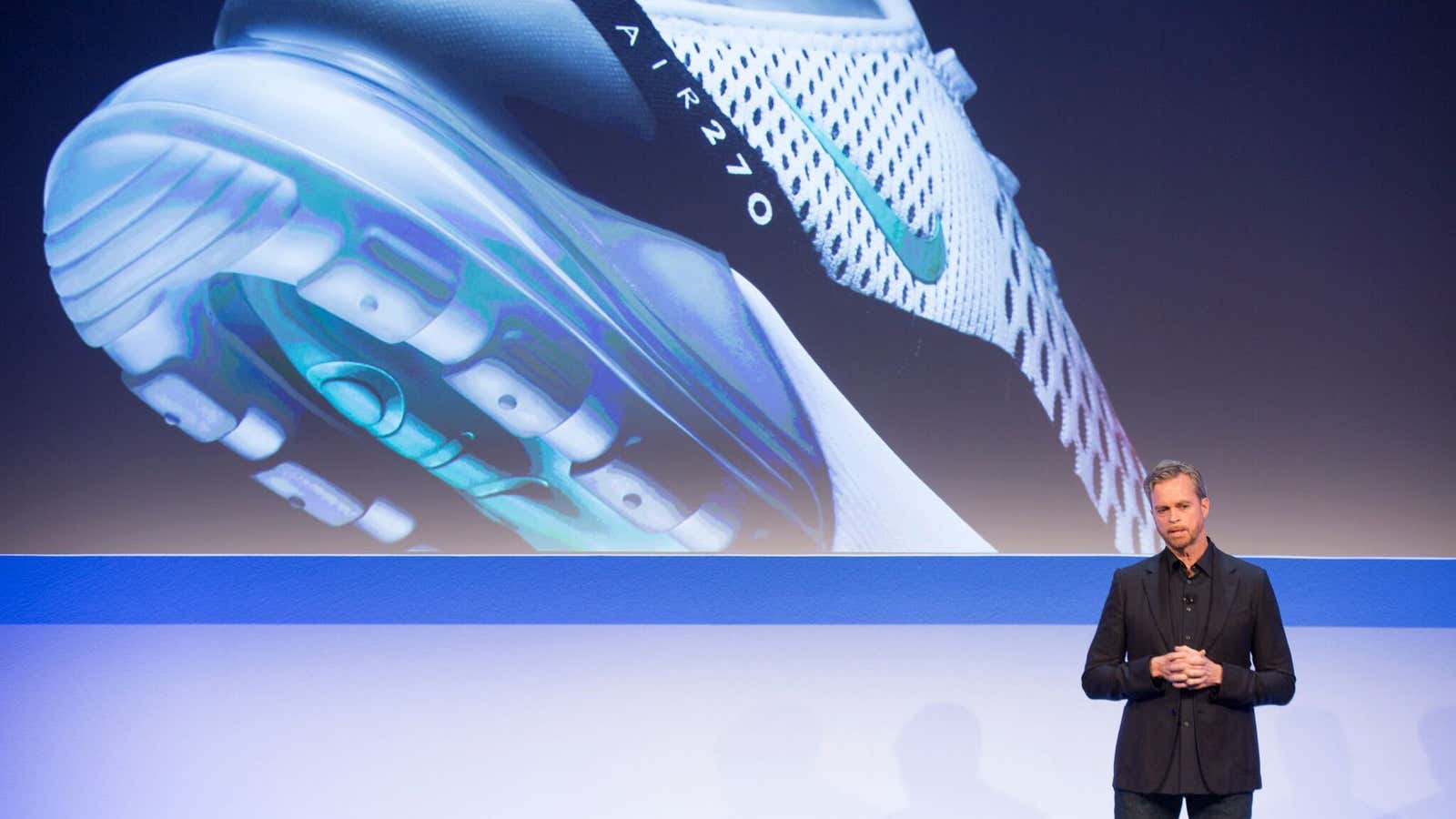The competition between the world’s top sneaker brands is sounding more and more like an actual foot race.
Nike talked about its plan to speed up manufacturing during the company’s investor day yesterday (Oct. 25). CEO Mark Parker and the rest of the Nike team sought to reassure shareholders that the company still intends to outrun its competition, despite an ongoing slowdown in sales and intense pressure from rival Adidas. But the executives said that new products in the pipeline, more focus on e-commerce, tighter distribution through retail partners, and—of course—speed will be key to the company’s long-term growth.
One emphasis at Nike is near-shore production to serve North America, the company’s biggest group of consumers and the world’s biggest buyers of sportswear. Nike makes most of its goods in Asia, but it has started bringing more manufacturing to regions such as Latin America, where it’s using automation to keep labor costs down and make products quickly.
Eric Sprunk, Nike’s chief operating officer, offered details about the company’s production and its two-year old partnership with Flex, a global manufacturer. Nike, he said, has just moved into a “near-shore, purpose-built footwear factory with Flex that will deliver over 3 million pairs to North America in fiscal year ’18 alone. By 2023, together with Flex, we plan to produce tens of millions of pairs near shore.”
More than 25% of those shoes, he added, will be made on a “responsive model” with short lead times. In the past, Nike would start manufacturing when it got a futures order, meaning an order it had to deliver in the next six months. Now it’s moving toward manufacturing quickly in response to what consumers are actually buying. The relationship with Flex, Sprunk said, “allows us to take our standard time, from just manufacturing to market, from about 60 days to 10 days or less.”
Tens of millions is not the bulk of Nike’s manufacturing. For context, the company will ship 1.3 billion shoes in fiscal year 2018, it said. But it’s still significant.
The emphasis on speed isn’t limited to near-shore factories. By the end of the fiscal year, Nike will also have installed more than 1,200 new automated machines at the factories of its Asian suppliers to handle cutting, cementing, shoe assembly, and making soles. It’s innovating on processes, too, such as developing a faster way to make those labor-intensive sneaker soles.
In a June report, Morgan Stanley analysts said that these sorts of efforts to speed up manufacturing and do more of it near the customers buying the products should significantly improve margins and help grab market share. The near-shore model reduces shipping expenses, import duties, and the risks of making a large volume of shoes in advance.
Adidas is counting on its Speedfactory in Germany and one opening shortly in Atlanta to do more of its own responsive manufacturing to serve European and US consumers. Sprunk appeared to take a shot at Adidas during his talk. “This is not about making one model in one factory,” he said, seeming to refer to the sneaker tailored to local markets Adidas is currently making at its Speedfactory. “For us, this is about scaling automation, digitization, and robotics across our entire source base and across our entire product line.”
The race is on.
